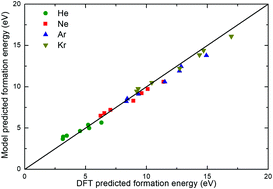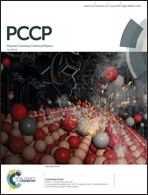Ab initio theory of noble gas atoms in bcc transition metals
Abstract
Systematic ab initio calculations based on density functional theory have been performed to gain fundamental understanding of the interactions between noble gas atoms (He, Ne, Ar and Kr) and bcc transition metals in groups 5B (V, Nb and Ta), 6B (Cr, Mo and W) and 8B (Fe). Our charge density analysis indicates that the strong polarization of nearest-neighbor metal atoms by noble gas interstitials is the electronic origin of their high formation energies. Such polarization becomes more significant with an increasing gas atom size and interstitial charge density in the host bcc metal, which explains the similar trend followed by the unrelaxed formation energies of noble gas interstitials. Upon allowing for local relaxation, nearby metal atoms move farther away from gas interstitials in order to decrease polarization, albeit at the expense of increasing the elastic strain energy. Such atomic relaxation is found to play an important role in governing both the energetics and site preference of noble gas atoms in bcc metals. Our most notable finding is that the fully relaxed formation energies of noble gas interstitials are strongly correlated with the elastic shear modulus of the bcc metal, and the physical origin of this unexpected correlation has been elucidated by our theoretical analysis based on the effective-medium theory. The kinetic behavior of noble gas atoms and their interaction with pre-existing vacancies in bcc transition metals have also been discussed in this work.

- This article is part of the themed collection: 2018 PCCP HOT Articles

 Please wait while we load your content...
Please wait while we load your content...
